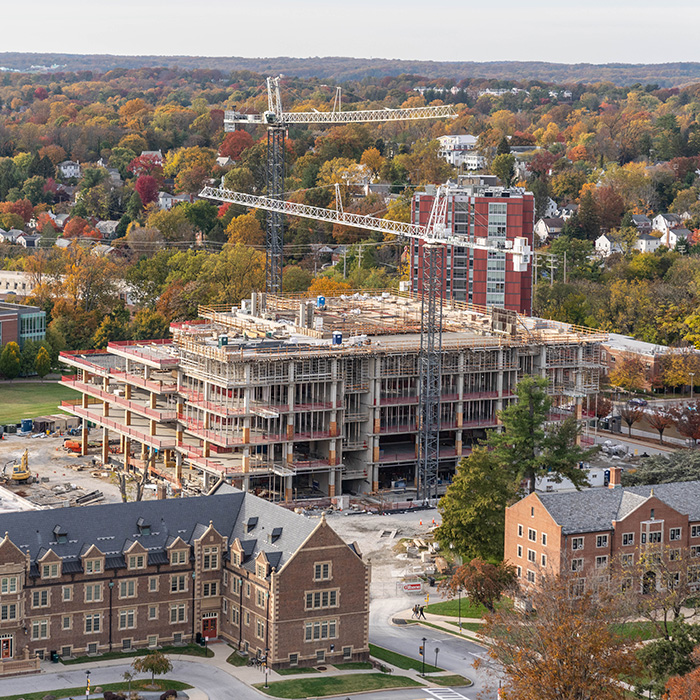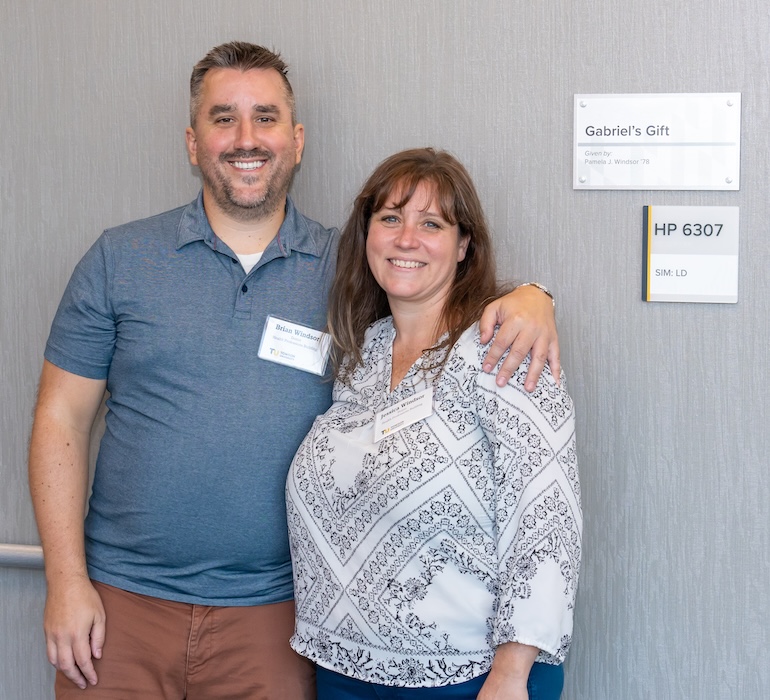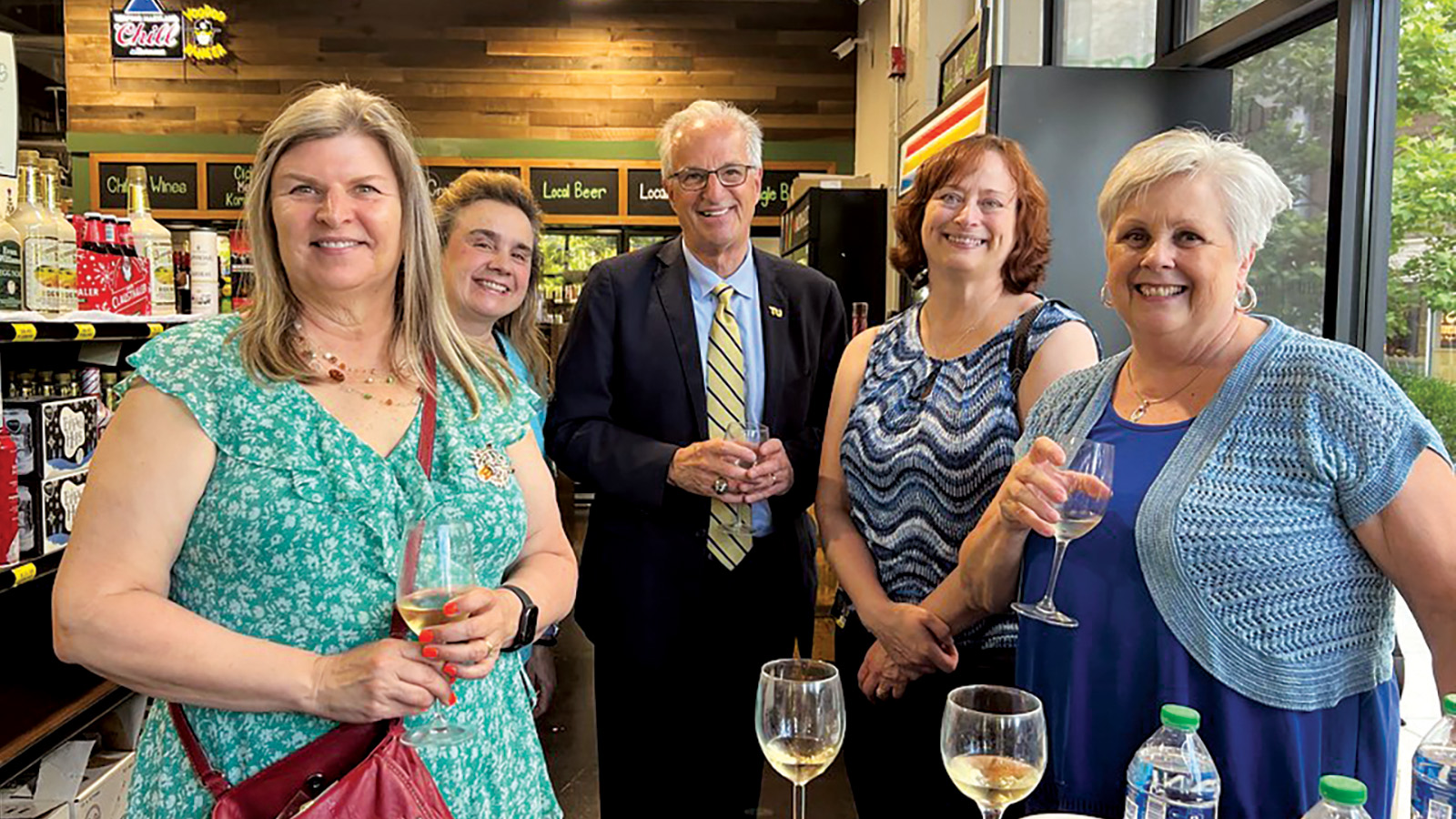Feature Series
A Conversation with Dean Lisa Plowfield , Ph.D., RN
We sat down with the dean of the College of Health Professions to learn more about the new building, its design and what effects it will have on the students, faculty and staff who spend their days there.
What was the goal for the design of the new building?
We as a college want to put our students in the best position for success. This new building is about the environment, technology and simulation that provide real-world experience in a safe condition for learning—a place where students can make mistakes, learn and grow without affecting patient care or the quality of care received.
What is your favorite space in the building?
The simulation center certainly is near and dear to my heart as a nurse and someone responsible for figuring out how to prepare novice providers in a safe space. The simulation center puts the students in as close to real-world experiences as we can provide and keep everyone safe, whether it happens to be with patient actors, mannequins or any of the other experiential learning spaces.
The simulations we do will transform students’ learning and help them reach a higher level of quality of care that they can deliver once they’re out in the field, based on the experience they’ve had in these spaces.
What is a design feature a casual visitor to the building may miss?
Being a health care provider in today’s world is an extremely difficult job, so we specifically designed and built spaces that were helpful to the longevity of one’s career. We created a respite garden so providers could learn to take care of themselves. We brought a lot of nature and daylight into the building. Whether that’s through the atria, the large windows, the plants throughout the building, it’s all there for the health and wellness of the students and future health care providers.
What are your hopes for the building?
This building is an investment in the future of health professions for the state. We’re delivering high-quality, well-educated, safe care providers, and that improves the wellness of our communities across Maryland and beyond.
I think this building is going to be transformational for the education of our students. It’s an investment in their learning, in helping them become health care providers with an expertise and knowledge base by which the public can trust that they know their craft and their science. But it’s also an investment in student well-being and in their longevity in their career. Developing and promoting well-being between the providers and our communities is healthy for everyone.
What was the overarching vision for the building’s design?
It was to create a state-of-the-art learning environment that blends academic excellence with well-being and setting a standard for what students can expect in their professional careers. Central to this vision was the inclusion of high-end finishes, modern furniture and bright, open spaces that reflect a sophisticated, upscale learning environment.
Every detail—from the sleek design elements to the calming colors and abundant natural
light—was carefully chosen to create an inviting, professional atmosphere that students
and faculty will enjoy being in every day. The goal was to foster a sense of pride
in the space while providing an environment that encourages focus, comfort and collaboration.
Why is there focus in the building on promoting interprofessional exchanges?
It creates opportunities for students to engage in teamwork and develop the communication
skills essential for success in integrated health care teams. In today’s
health care settings, providers take a team-based approach. The building’s flexible
classrooms, research spaces, and faculty-student collaboration zones further
enhance innovative thinking and problem-solving, positioning CHP students to lead
in a dynamic and ever-changing industry.
What is the benefit to designing the building to mimic real health care settings?
We want students to feel confident and comfortable navigating modern, high-end health
care facilities from day one. Whether it’s the advanced simulation centers that mimic
real-world patient care scenarios or the informal collaboration areas where students
can gather and exchange ideas, every feature was selected with an eye toward preparing
students for the professional spaces they will eventually work in.
Students will be better equipped to transition seamlessly into their careers, knowing
they are prepared for the environments
they will encounter.
How does it feel to officially open the building?
It is a moment of immense pride and accomplishment for our entire college and university. This building represents not just the culmination of years of planning, collaboration and dedication, it’s a physical manifestation of our commitment to providing top-tier education, fostering interprofessional collaboration and ensuring that our students have access to the most advanced tools and technology available. I’ve witnessed firsthand the passion our faculty, staff and students bring to their work, and I know this new space will further ignite that enthusiasm.
More on the New Health Professions Building
Learn about the ins and outs of Towson University’s new Health Professions Building, from the ground-floor classrooms to the terraced roof gardens and all the state-of-the-art experiential learning areas in between.

Building the Future of Health Care
The new Health Professions Building’s cutting-edge technology and collaborative learning spaces make it a leading center for interprofessional health and wellness education.

An Evolution of Excellence
Karen Keady ’87 reflects on her nursing career and shares her thoughts on some of the Health Professions Building’s cutting-edge technologies.

On Angel's Wings
Pam Windsor ’78 shares the story behind the Health Professions Building’s Gabriel’s Gift Labor & Delivery Suite

